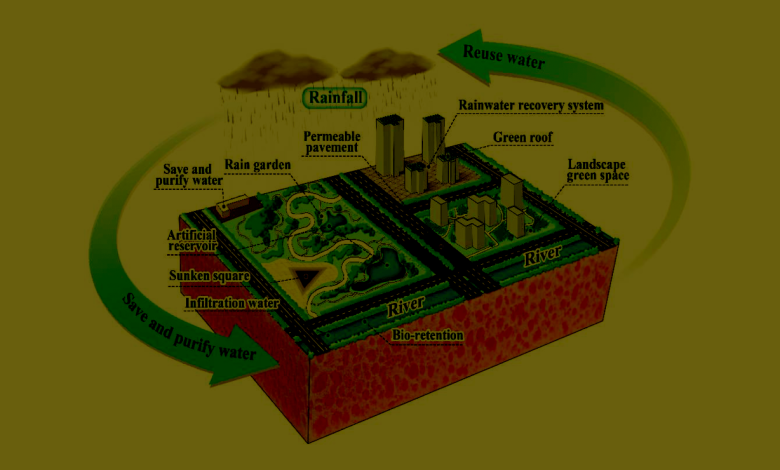
Context- Recent devastating floods and infrastructure damage in China have raised concerns about the effectiveness of this “sponge city” initiative to reduce urban flood risk.
Key Highlights
- The Sponge City Initiative was launched in China in 2015 to improve flood resistance in bigger cities in order to make better use of rainwater through architectural, design and infrastructure changes.
- However, Chinese cities are still prone to heavy rain.
- In July this year, floods and related geological disasters caused 142 deaths and disappearances, destroyed 2,300 homes and caused direct economic losses of 15.78 billion yuan ($2.19 billion).
What are “Sponge Cities”?
- The term “Sponge cities” is used to describe urban areas with abundant natural areas such as trees, lakes and parks or other fine structures designed to absorb rain and prevent flooding.
- It is designed to better use lower-impact “nature-based solutions” to distribute water and improve drainage and storage.
- This includes the use of permeable asphalt, the construction of new canals and ponds, and the restoration of wetlands, which would not only facilitate the flow of water, but also improve the urban environment.
Steps taken by India for sponge cities
- Swachh Bharat Mission (Urban): While this mission mostly focuses on sanitation, it also emphasizes solid waste management and pollution control to help prevent water logging and flooding.
- National Mission for Smart Cities: It promotes initiatives to control urban flooding through rainwater harvesting, green spaces and proper drainage system.
- Atal Mission for Rejuvenation and Urban Transformation (AMRUT): The mission focuses on the development of basic infrastructure in cities and villages in the area of water supply; manage drains and bulkheads; rainwater drainage.
- Guidelines and regulations: The government has published sustainable urban development guidelines that encourage the addition of features such as permeable pavements, green roofs and retention ponds to improve water absorption.
Limitations of Sponge cities
- The Sponge city’s infrastructure can withstand a maximum of 200 millimeters (7.9 in) of rain per day.
- They may also face challenges related to the high upfront costs of infrastructure changes, maintenance requirements and potential disruptions during construction.
- In addition, factors such as climate change and urban development patterns may affect their effectiveness.





.png)



